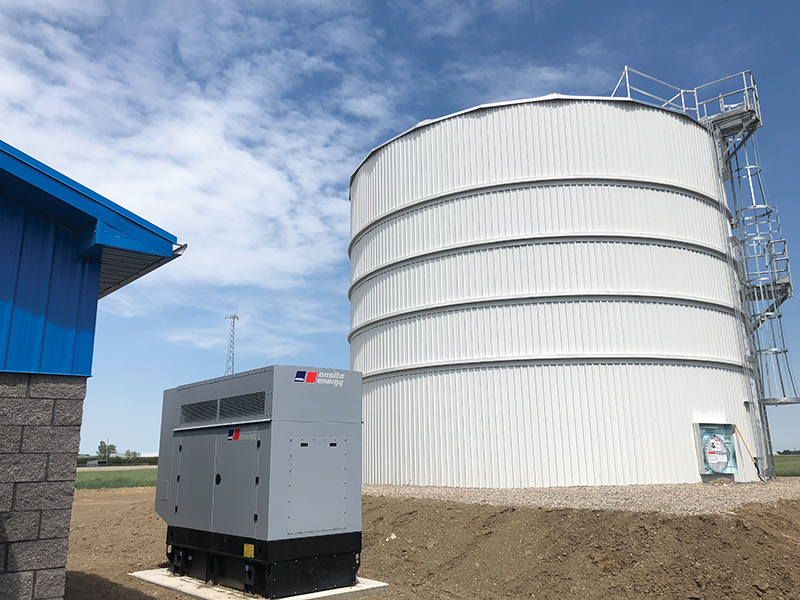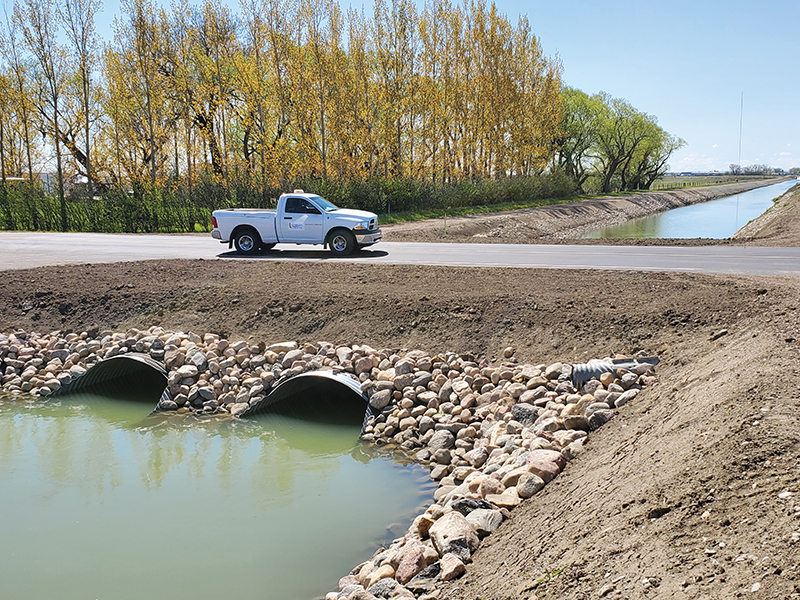How Lethbridge County doubled down on its asset management.
By Michael Bly
Lethbridge County, Alberta, (population 10,061) started working on its asset management in 2018 because its employees and council recognized the need for a reliable and ongoing strategy to manage the municipality’s assets. After receiving a grant from the Municipal Asset Management Program (MAMP) in 2018, the team began moving through the program’s Asset Management Readiness Scale (AMRS). (MAMP has approved 71 grants in Alberta since its founding and provided training through MAMP-funded partners to more than 350 Albertans.) By using the AMRS, the team knew they’d chart a safe and smart path forward to guide the city’s decision making for decades to come.
Highlights of the strategy included:
- Completed in-house training for a large group (at a reduced rate);
- Increased interest in asset management and related processes; and
- Prioritized asset management as a budgetary and departmental priority.
Challenge
Though it had already moved through Level 1 of the AMRS, the team needed a new plan to bring its asset management to life. It required a clear strategy and a roadmap to move from theory to action. This was the focus of its Policy and Governance work in Level 2.
Collaborative approach
Members of the asset management team benefitted immensely from training provided by several of MAMP’s partner organizations. Elected officials and municipal staff members participated in a variety of awareness-building and training events offered by Alberta Urban Municipalities Association and Rural Municipalities of Alberta (jointly), Canadian Urban Transit Association, NAMS Canada and the Canadian Network of Asset Managers
The municipality also hired an asset management consultant to help the team make accurate assessments before it crafted an implementation plan.

Barriers
It can be a challenge to ensure that Council members are regularly trained and engaged on relevant aspects of asset management, alongside staff. Though the Council participated as much as possible, employee team members had more training in asset management processes and its benefits than others involved in the process. This knowledge gap was noticeable during the early stages of the project.
Results
Lethbridge moved to Level 2 in the AMRS’s Policy and Governance competency by completing three steps:
- Policy and objectives: It completed its formal Asset Management Policy, which was adopted by council and endorsed by the senior management team.
- Strategy and framework: It completed a State of Maturity Report and a Systems Maturity Report, both of which contain strategies for the next two phases of work.
- Measurement and monitoring: It outlined, documented and tracked its objectives through regularly scheduled asset management team meetings and an Action Tracker.
Lethbridge also moved from Level 1 to Level 2 in several other competencies in the AMRS, including People and Leadership and Planning and Decision-making. It moved to Level 3 in Data & Information as well as Contribution to Asset Management Practice. It’s worth noting that municipalities rarely work on one competency in isolation. Rather, they typically find that work on one competency helps them progress in others.
Benefits
- The consultant provided in-house training to a large group, which meant more people than expected received training for a lower-than-anticipated cost. The team transferred the savings to the rest of the project and had a well-trained team.
- The group training increased interest in asset management and related processes. Employees who thought they might not have a significant role in asset management now understand where they fit in.
- Asset management is now a budgetary and departmental priority. It’s a budget item, and generates significant discussions amongst council.
We know we’re moving in the right direction with our asset management. Our project team is connecting departments in new ways so that, as a municipality, we continuously strive to improve our decision-making processes together. We all have a stake in getting asset management right so that we can ensure we provide safe, reliable and sustainable services to our residents and improve levels of service.”
What they learned
Get support. Having clear support from council and senior management is critical. It allowed the team to complete this project and deem it a success. With the right support, the team was able to adjust finances and resources as required.
Assign a lead. Assign a champion to head up your asset management project to lead the team through the necessary steps. This person plays a major role in keeping team members and others engaged in the process and in maintaining momentum. It’s tough to progress without someone leading the effort.
Establish a cross-functional team. Having a focused, engaged and dedicated asset management team helps make asset management a high priority in your organization. Ensure that all members have dedicated time assigned to this project so they can put in the effort needed to help it succeed.
Schedule regular team meetings. This keeps each team member engaged in the overall project work. It also encourages the regular discussion of progress across teams that depend on each other to accomplish overarching objectives.
Prioritize council’s asset management awareness. Council’s support is not enough. You have to keep up their asset management-related educational opportunities. It’s imperative that they understand asset management’s importance, benefits and processes as well as the employee team, so everyone can make well-informed decisions together.

Next steps
The Lethbridge team is focused on three areas for next steps:
- Asset inventory validation: They will continue to work with a consultant to help disaggregate and validate spatial data against financial data.
- Gap analysis and lifecycle strategy: They will further strengthen their data by defining life cycle strategies and applying these against their assets. This will involve identifying deficiencies and addressing them, and further refining and developing risk models against all asset classes.
- Policies and processes: They will develop formal asset management processes within the organization. They will also create a data governance policy (i.e., define asset management practices and workflows across the organization to ensure that data integrity is maintained).
There’s significant work ahead, but the team understands the positive impact that accomplishing these objectives will have on its long-term asset planning.
Michael Bly is GIS and asset coordinator for Lethbridge County, Alberta.
















